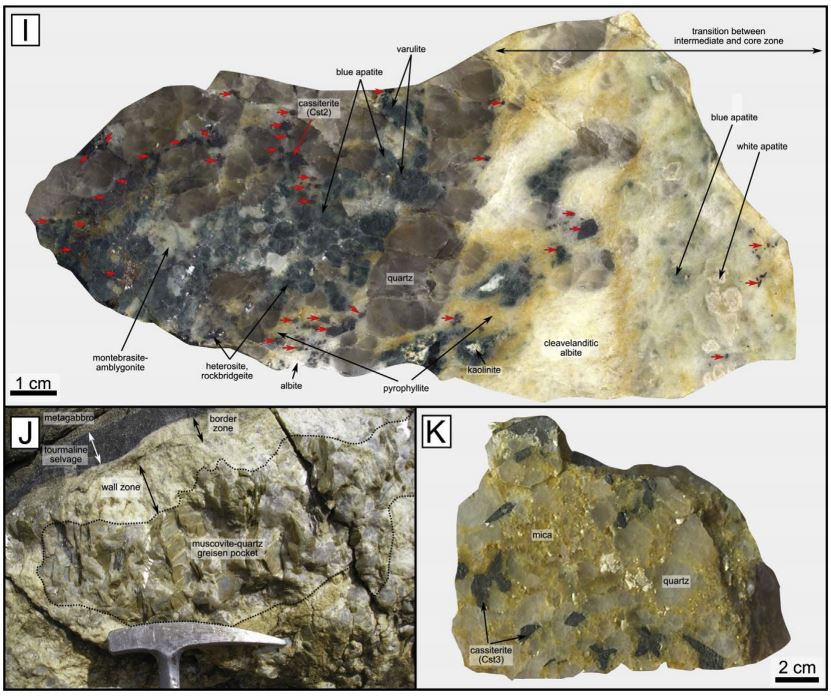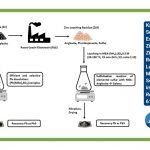SIM² KU Leuven geologists, Niels Hulsbosch and Philippe Muchez, were able to identify and track aqueous fluid immiscibility in the crystallisation of pegmatites. Moreover, the impact of fluid immiscibility on the fractionation and precipitation of critical and rare-metals like lithium, tantalum and, especially, tin has been assessed. The work is published in the Elsevier Journal Lithos.
Pegmatites
Pegmatites are intrusive igneous rocks that crystallise from the residual melts of granitic intrusions. These rocks represent one of the most highly evolved compositions observed in the geological record. Pegmatites are therefore important for understanding the processes of magma evolution and enrichment in incompatible elements.
This rock type is well recognised for hosting high concentrations of diverse gem and industrial minerals (e.g. beryl, tourmaline and spodumene) as well as strategic rare-metals (e.g. Li, Be, Rb, Nb, Cs, Ta and Sn). The formation of pegmatites and especially the role and degree of immiscibility processes is an important ongoing debate.
Assessment of cassiterite and spodumene pegmatites
The researchers investigated cassiterite (SnO2) and spodumene (LiAl(SiO₃)₂) mineralised pegmatites in Rwanda by using field work, petrography, fluid inclusion microthermometry, and microanalysis of minerals and fluid inclusions (Raman microspectroscopy and LA-ICP-MS).
The study demonstrated that a saline aqueous H2O-NaCl-KCl-(CO2,N2) fluid (~20 wt.% NaCl and ~3 wt.% KCl) was already saturated in the pegmatite melt during onset of crystallisation.
Extensive crystallisation of the melt caused an evolution of the fluid towards a more Li-enriched and Na-depleted H2O-NaCl-LiCl-(CO2,N2) composition (6-12 wt.% NaCl, 1-10 wt.% LiCl).
By combining in-situ analyses of the fluid composition by LA-ICP-MS with Sn melt-fluid partitioning and solubility data, the researchers demonstrated that primary cassiterite precipitated from the exsolved saline aqueous fluid present at the interface of the melt phase.
Fast disequilibrium growth of anhydrous mineral assemblages likely caused the formation of, at least locally, water-saturated melt compositions at the crystallisation front of the large crystals.
This study emphasises the importance of local water-saturated melt conditions and the presence of an immiscible aqueous fluid phase during the internal crystallisation and mineralisation of rare-element pegmatites.
Full reference of paper
Niels Hulsbosch, Philippe Muchez, Tracing fluid saturation during pegmatite differentiation by studying the fluid inclusion evolution and multiphase cassiterite mineralisation of the Gatumba pegmatite dyke system (NW Rwanda), LITHOS, (354–355), 2020, 105285. URL Link.






